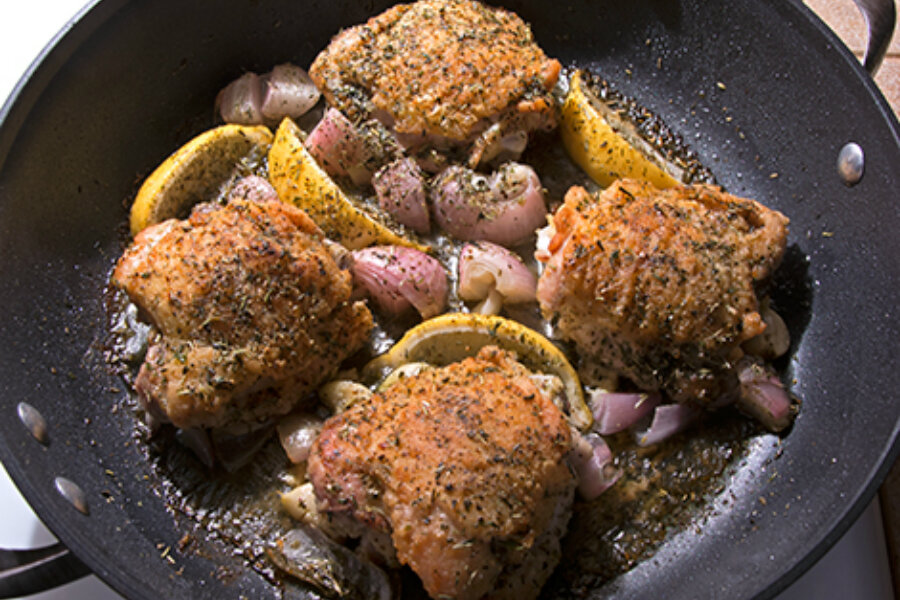Roast chicken Provençal
Loading...
In one of my posts before the holiday, I wrote about how we would spend Christmas. Christmas Eve dinner in Chinatown (at Lao Shanghai – delicious), a movie Christmas day ("Spotlight," a surprisingly uplifting film for such a heavy subject), and a simple roast chicken dish for dinner. It was good. This dish was my second attempt, cooked last night with a few tweaks. It was very good.
This wasn’t going to be a post. It was just going to be Christmas dinner. I found a promising recipe in The New York Times and followed it. Made some mashed potatoes and sautéed spinach. Marion made a delicious gravy. Marion’s sister Lena brought ice cream, fresh raspberries and walnuts for dessert. Drinks and conversation flowed freely around our little kitchen table.
But I wanted the chicken to be, I don’t know, more. The recipe promised crisp skin, even though it didn’t call for skillet browning. For me, that always does the trick. So I tweaked a little last night, changing just a few things. And I think I got it right, at least for us.
Both recipes call for a crazy amount of herbes de Provence. Trust the Times and me on this. Yes, it is big and in your face with this dish. And it is perfect.
Roast Chicken Provençal
Adapted from The New York Times
Serves 2 with potential leftovers (can be doubled – see Kitchen Notes)
4 chicken thighs, bone-in and skin-on
Salt and freshly ground black pepper
Flour for dredging
3 tablespoons olive oil, divided
2 medium-to-large shallots, peeled and quartered
1/2 lemon, sliced vertically into 4 wedges
4 large cloves garlic, peeled and lightly whacked with the side of a knife to just crack open
1 tablespoon herbes de Provence
1/4 cup dry vermouth (or 2 tablespoons each lemon juice and water)
1. Preheat oven to 400 degrees F.
2. Trim excess fat from chicken thighs and season generously with salt and pepper. Dredge in flour, shaking off excess. Heat 2 tablespoons of oil over medium-high flame in a large, ovenproof sauté pan. Add chicken to pan, skin side down, and cook undisturbed until golden brown, 5 to 7 minutes.
3. Turn chicken and remove from heat. (If the chicken produces lots of fat, transfer thighs to a plate, drain all but 2 tablespoons of fat and return thighs, skin side up, to pan.) Gently toss shallots, lemon slices, and garlic with remaining tablespoon of olive oil in a medium bowl. Arrange shallot mixture around chicken thighs in pan. Sprinkle herbes de Provence over everything and pour vermouth into the pan.
4. Transfer pan to oven and roast for about 20 minutes, basting chicken with pan juices halfway through. Chicken should be thoroughly done at this point, but check with an instant read thermometer; meat should be at least 165 degrees F in the thickest part of the thigh. Transfer to a platter and serve. Be sure to eat the shallots — they are tender, sweet and delicious.
Kitchen Notes
Doubling up. If you don’t have a skillet large enough to handle a double recipe, brown the chicken in batches, then transfer it to an oiled roasting pan. Pretty much double all the ingredients except for the oil.
Related post on Blue Kitchen: Roasted Chicken with Grapes, Mushrooms and Shallots






